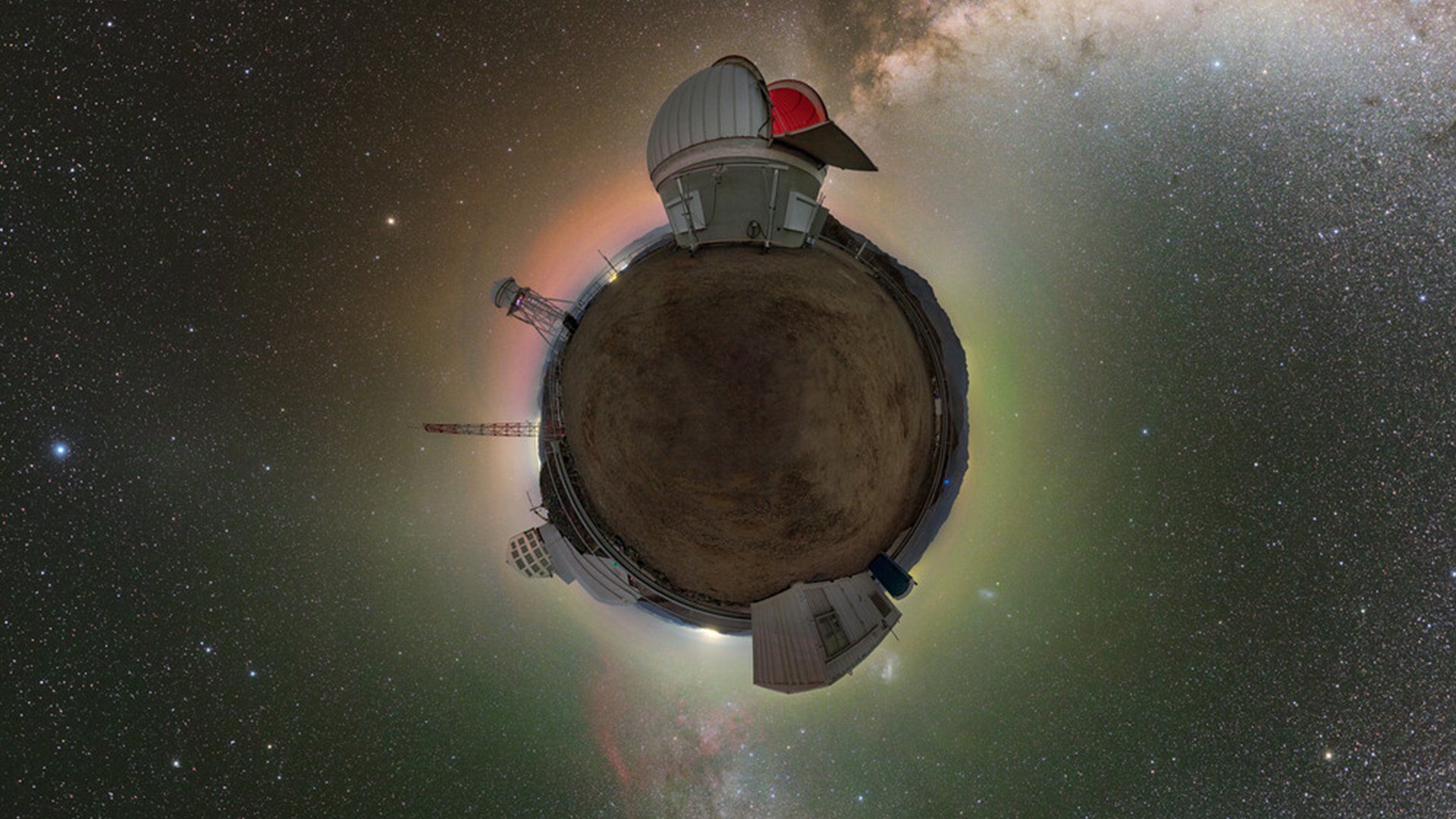
What it is: The Rubin Auxiliary Telescope, the Vera C. Rubin Observatory and the Milky Way.
When it was taken: April 2022 and published Jan. 10, 2024.
Where it is: Cerro Pachón in northern Chile, 8,850 feet (2,700 meters) above sea level.
Why it's so special: This image is a unique way to see some of the most exciting hardware in astronomy. Originally a 360-degree panoramic photo, this image presents the scene as a photosphere, making it look as if the peak of Cerro Pachón is its own little planet. The main dome is the Rubin Auxiliary Telescope (AuxTel), with the stars of the Milky Way appearing to spill from its red-lit interior. The "planet" is surrounded by green and red light called airglow, which is the result of trace particles and gasses in the atmosphere that are electrically charged, or ionized.
In the lower left of the image is the Vera C. Rubin Observatory — a structure that is on the cusp of changing astronomy forever. When it sees "first light" in August, it will begin conducting nightly surveys of the Southern Hemisphere's night sky using a wide-field 27.6-foot (8.4 meters) Simonyi Survey Telescope (SST) and a 3,200-megapixel camera — the largest digital camera ever constructed. An image showing just the Rubin observatory against the Milky Way is also available.
The observatory's decade-long survey, the Legacy Survey of Space and Time (LSST), will scan the sky throughout the night, creating 15 terabytes of data per night. It will, therefore, identify anything that moves or brightens, such as asteroids and supernovas, but it's also hoped LSST will discover 20 billion galaxies and stars.The image — which is also published as a panorama, a 360-degree panorama and a full dome — is the work of Petr Horálek, an astrophotographer from the Czech Republic and a NOIRLab audiovisual ambassador as part of the NOIRLab 2022 Photo Expedition.
"Pachon has epic night sky, and I felt I was literally within reach of the Universe ... and also photographing something historically epic," Horálek told Live Science in an email. "The Rubin Observatory will be the best survey telescope for many years ahead ... so what a feeling capturing the new epic history of astronomy."
Horálek used a Canon Ra camera with a Sigma 35mm lens to take a series of 10-second exposures that he then stitched into a panorama.






